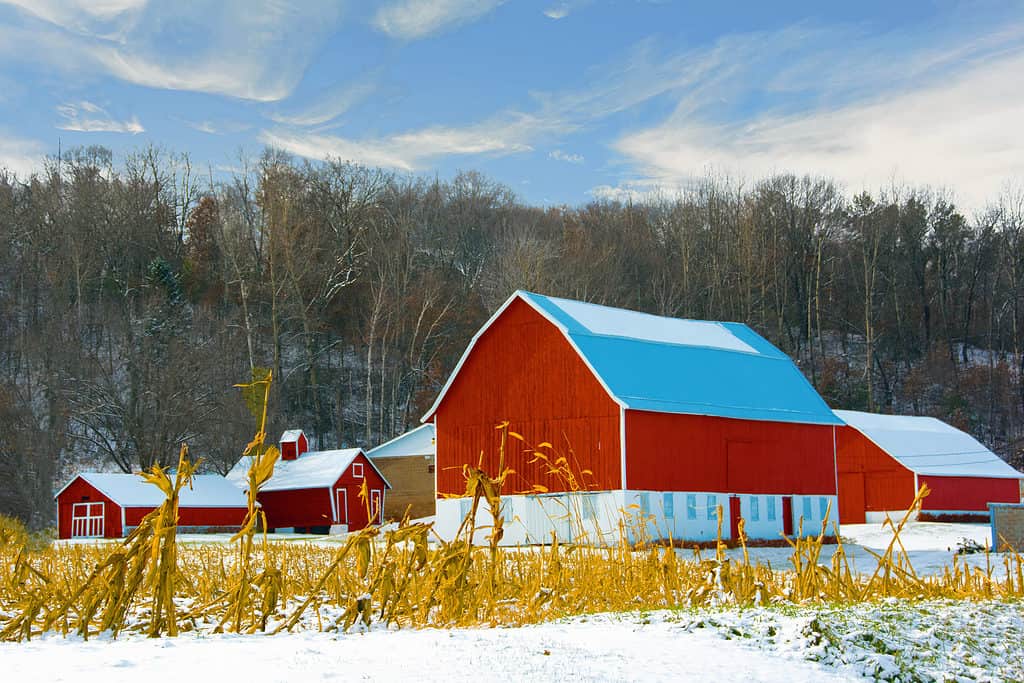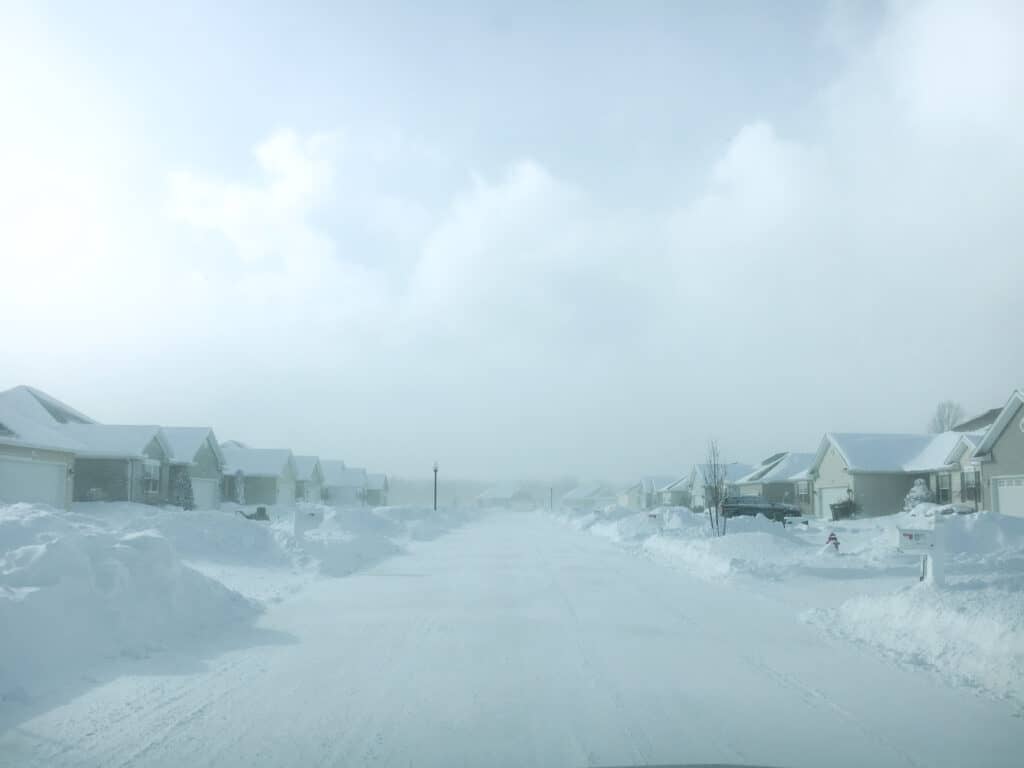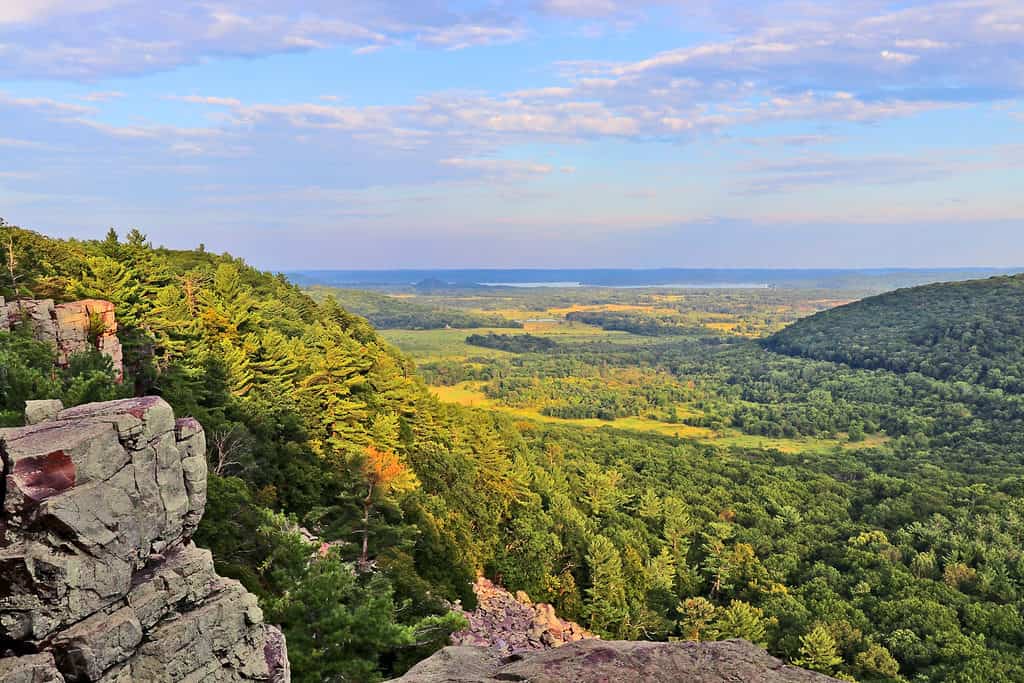April in Wisconsin is often like a spinning game of roulette. Will it rain? Will it snow? Or will it be like this April 2023, where we had a few days of 80°F, which melted all the snow and caused flooding, only to have it snow three days later? Having snow in April isn’t shocking for Wisconsinites. In fact, many of the natives remember the biggest April snowstorm in Wisconsin.
Typical Weather in Wisconsin in April

On average, Wisconsin sees lows of 35.2°F and highs of 56.6°F and only measurable snowfall between November and April.
©iStock.com/William Reagan
As mentioned before, Wisconsin’s “spring” weather is often atypical. But on average, Wisconsin sees lows of 35.2°F and highs of 56.6°F. And while “April showers” are supposed to bring “May flowers,” the precipitation Wisconsin sees is a range of rain and snow. It is not unusual for Wisconsinites to experience snowfall until the end of the month. Southern cities, like Milwaukee, can expect 2 inches on average of snow in April, whereas northern cities like Wausau can see 6.5 inches. Similarly, in April, Milwaukee usually gets 3.86 inches of rain, whereas Wausau sees 3.12 inches.
All in all, it is a safe bet to keep your winter coats and boots handy in case of a snowstorm. But who knew how much we would need our snowblowers during the biggest April snowstorm in Wisconsin?
Biggest April Snowstorm in Wisconsin

The blizzard that hit April 13-16, 2018, dumped 15-35 inches across Northeast Wisconsin, making it the biggest April snowstorm in Wisconsin.
©eyerazor/Shutterstock.com
If you can recall, 2018 broke many records for snowfall in April. The blizzard that hit April 13-16, 2018, dumped 15-35 inches across Northeast Wisconsin. The Milwaukee Journal Sentinel has an impressive photo gallery of when the snow hit. But the heavy, wet snow caused many barn roofs to collapse, trees to crash down, and power outages for some areas. This severe snowstorm certainly earned the title of the biggest April snowstorm in Wisconsin.
Other counties like Fond du Lac and Winnebago got hit with ice as well, which caused dangerous road conditions and more tree and landscape damage. Schools closed as snowplows worked overtime to get roads clear and safe. All workers, from plowing, utility repair, and emergency response, were heroes of the biggest April snowstorm in Wisconsin.
How Late-Season Snowstorms Impact Wildlife

Late snowfalls delay the appearance of berries, nuts, and insects, causing food shortages for many animals.
©iStock.com/Hongkun Wang
Prolonged snow and late-season snowstorms affect water and food sources for wildlife. As plants grow later, food sources like berries, nuts, and insects are also delayed. This affects Wisconsin wildlife like turkeys, cardinals, and black-capped chickadees. The postponed spring also upsets bigger predators like foxes, badgers, and black bears. The food shortage forces wildlife to take more significant risks and come into closer contact with humans, looking for something to eat.
The late snow also affects livestock, which Wisconsin has in abundance. The snow can prevent people from being able to feed their animals. Or a sudden storm may trap cattle or prevent calves from reaching shelter. The harsh winds create cold stress on livestock on top of freezing temperatures. And finally, the snow prevents animals from grazing on the pastures. For a state with a lot of livestock to care for, the biggest April snowstorm in Wisconsin can cause much harm.
The Earliest Snow Wisconsin Has Ever Experienced
Besides late snowstorms, Wisconsin also experiences many early flakes of snow. It’s not unusual to trick-or-treat in winter coats! However, this state’s earliest snow was on September 7, 1983. Unfortunately, residents of the Lac Vieux Desert (on the border of northern Wisconsin and the Upper Peninsula of Michigan) saw snow on that cold Wednesday of 1983. Luckily, it was under 0.1 of an inch! So it didn’t last long.
Because the Lac Vieux Desert has a higher elevation, and because of the lake effect, snow showers off of Lake Superior, many cities in Vilas County and the surrounding area experience early snow and harsh winters. The lake effect is when cold, often from Canada, blows over the Great Lakes. The heat and moisture from the Great Lakes form larger and larger clouds until heavy snow bands hit the shore, causing high snowfall rates.
In Conclusion

Aerial view from the rocky Ice Age Trail during summer sunset hours. Devil’s Lake State Park, Wisconsin.
©MarynaG/Shutterstock.com
While Wisconsin may experience some early and late snowfalls, the amount of snow from the biggest April snowstorm in Wisconsin is unusual. That is why 2018 was a record-breaking year! Usually, Wisconsin experiences measurable snowfalls between November and April, but summer makes it worth it! Mild, sunny, and beautiful Wisconsin summers make all the snow bearable.
The photo featured at the top of this post is © MarynaG/Shutterstock.com
Thank you for reading! Have some feedback for us? Contact the AZ Animals editorial team.






